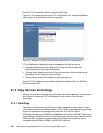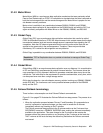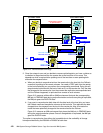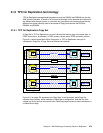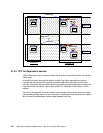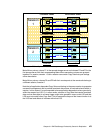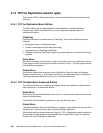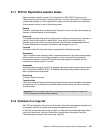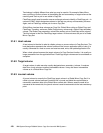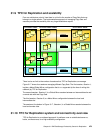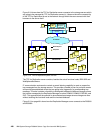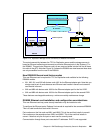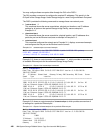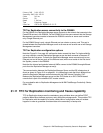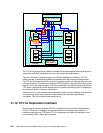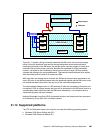478 IBM System Storage DS6000 Series: Copy Services with IBM System z
Terminology is slightly different from what you may be used to. For example, Metro Mirror
uses a primary or source volume at the sending site and a secondary or target volume at the
receiving end. Such a pair is now called a Copy Set.
FlashCopy usually used to mention source and target volume to identify a FlashCopy pair—in
contrast to RMC, which designates volumes in that pair as primary and secondary volumes.
Again, such a FlashCopy volume pair is now a Copy Set.
Global Mirror involves three volumes per Copy Set. Global Mirror relies on Global Copy and
FlashCopy. Therefore, we have a Global Copy primary volume and a Global Copy secondary
volume. The Global Copy secondary volume has another role as FlashCopy source volume.
The third volume is then the FlashCopy target volume. All three volumes are part of a Global
Mirror Copy Set.
31.8.1 Host volume
A host volume is identical to what is called a primary or source volume in Copy Services. The
host designation represents the volume functional role from an application point of view. It is
usually connected to a host or server and receives read, write, and update application I/Os.
When a host volume becomes the target volume of a Copy Services function, it is usually no
longer accessible from the application host. FlashCopy target volumes can be considered an
exception.
31.8.2 Target volume
A target volume is what was also usually designated as a secondary t volume. It receives
data from a host volume or another intermediate volume. It may also be an intermediate
volume as in a Global Mirror Copy Set.
31.8.3 Journal volume
A journal volume is currently the FlashCopy target volume in a Global Mirror Copy Set. It is
called a journal volume because it functions like a journal and holds the required data to
reconstruct consistent data at the Global Mirror remote site. When a session needs to be
recovered at the remote site, the journal volume is used to restore data to the last consistency
point.



